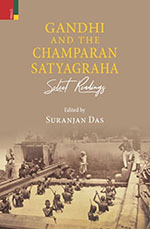The eight-week Champaran Satyagraha, the scene of the first triumph of Gandhian technique in India was a striking example of protest action and mustering support for that from the urban nationalist leadership through the initiatives of local peasants. Since his South African days, it had been Gandhi’s wish to invoke passive resistance or Satyagraha, as he preferred to call it, in his own country. He considered Satyagraha a panacea for all ills of the country. By persuading Gandhi to take up the issues of Champaran indigo cultivators, the local peasant leaders provided him an ideal opportunity to showcase his cherished ambition. In a sense, the Champaran episode reinforced Gandhi in his faith that the Satyagraha would resolve the country’s issues with the Raj, without rancour and without dishonour of the latter. Besides, though in terms of peasants’ emancipation it was a modest achievement, for Gandhi it had far-reaching consequences. It gave him nation-wide recognition and thereby marked the beginning of the process which was to lift him from a new-comer and a marginal figure of nationalist politics to a leading figure.
Gandhi once declared: ‘It was Bihar that made me known to the whole of India. No one knew me earlier. I had almost become a Negro after staying in Africa for twenty long years. …..Then I came to Champaran, and the entire country woke up’.1 The present volume is perhaps the testimony to this fact.

